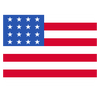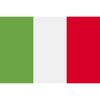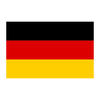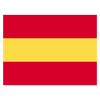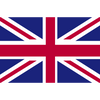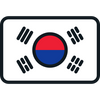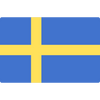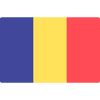Simple steps that you can take to relieve delayed onset muscle soreness.
It’s common to feel euphoric in the immediate aftermath of a good workout. You might be tired and drenched in sweat, but you’ve got it done, and you know you’ll be stronger, fitter and healthier as a result. However, there is another feeling that you’ll probably not notice until the next morning, when you try and get out of bed and face up to the fact your body is wracked with delayed onset muscle soreness (DOMS).
If you take a glass half-full approach, you can view DOMS as an indication of a job well done with your workout. You’ve pushed your muscles and they are now rebuilding themselves to be stronger than before. Of course, if you don’t experience DOMS in the days following you might take that to mean that you haven’t worked hard enough, but that is absolutely not the case. If you warm up and stretch properly, you can savage your body in the gym without succumbing to crippling DOMS – unless you’re trying a new activity, in which case DOMS is almost guaranteed. Sorry.
Even if you do take a somewhat positive view of DOMS, no-one is going to claim that it’s an enjoyable experience in and of itself, so we sought advice on reducing and preventing the pain from Ross Preston, health advisor at the Bupa Blackpool Health Clinic.
What causes DOMS?
“DOMS occurs when you start a new exercise programme or increase the intensity [of your training],” says Preston.
“This causes microscopic damage to your muscle fibres, which results in soreness and stiffness. Exercises that really load the muscles in a lengthened position, such as Romanian deadlifts, have a tendency to increase your chances of being sore after a workout.”
It’s important to remember, though, that DOMS is only a temporary pain station en route to a stronger you.
“Don’t let DOMS put you off your workout,” says Preston.
“This discomfort is only temporary as your muscles adjust to the new exercises and grow stronger. The next time you do that activity there will be less damage to your microscopic muscle fibres, so you shouldn’t be as sore and your recovery time will be quicker than the first time.”
What are the best ways to prevent and treat DOMS?
You can read Preston’s opinion on several popular DOMS preventions and cures below, but first some general advice on how to build up your training to reduce the risk of severe muscle pain.
“There isn’t a proven formula to prevent DOMS, but you can reduce its severity by gradually introducing a new activity or slowly increasing the intensity,” says Preston.
“While stretching is a must after exercising to reduce the risk of injury, it won’t prevent DOMS.”
Fortunately while DOMS can be unavoidable at times, there are treatments to try.
“There are a few things you can do to alleviate the discomfort such as hot/cold baths, ice packs, massage, tender-point acupressure and rest,” says Preston.
“Try a couple of these options to see which one works the best for you.”
Common DOMS Cures And Whether They Work
The internet is awash with purported cures for DOMS, but – whisper this quietly – you can’t always believe everything you find on the internet (unless it’s on Coach), so we asked Preston for his opinion on some of the most common DOMS treatments.
Compression Clothing
The theory behind compression helping with DOMS seems valid, but so far it’s unproven.
“There is no conclusive evidence to suggest that compression clothing can cure or prevent DOMS,” says Preston, which is a downer. But wait! There’s more.
“When your muscle groups work hard, they become inflamed as a result of extra fluid and white blood cells rushing to the area. This inflammation can cause soreness and tightness in the muscle groups. However, people who wear compression clothing may find their muscles don’t become as inflamed as they would do if they’re wearing loose clothing.
“It’s also believed that compression garments may increase blood flow to the muscles, reducing the amount of creatine kinase, which is a chemical that builds up in your muscles and causes soreness.”
Foam Rolling
Good news for fans of self-myofascial relief: it gets the thumbs up for treating DOMS.
“While your muscle fibres are repairing themselves after a workout, they can often become knotted, reducing muscle elasticity and causing soreness and stiffness,” says Preston.
“Foam rolling, massage and active stretching can help alleviate the discomfort of DOMS.”
Pain Relief Balms
No real shock here: pain relief balms can indeed relieve pain.
“Balms like Deep Heat or Tiger Balm provide a cooling sensation on the skin, which can help reduce soreness,” says Preston.
“The menthol in the balms cause calcium ion to affect your neurons that sense temperature and inhibits your brain/pain connection in that area.”
Hot/Cold Showers And Ice Baths
The fact that subjecting yourself to hot, cold and freezing water works is good news – it’s a cheap and easy solution. (So why do we feel like it’s bad?…)
“Hot baths cause your blood vessels to expand, filling them with blood, while cold or ice baths constrict the blood vessels, forcing the blood to move on to other parts of the body,” says Preston.
“A combination of both (known as contrast hydrotherapy) flushes the nutrients carried in the blood more effectively and quicker to your muscles, which speeds up the recovery process.”
BCAA Supplements
Branched-chain amino acid supplements aren’t a DOMS cure-all, but they might help with the pain.
“Amino acids are the building blocks of protein and are essential in muscle repair and growth,” says Preston.
Your body does not naturally produce all the amino acids it needs, and the ones it doesn’t produce you have to get from food or supplements, including some that are vital for muscle repair.
“Three important amino acids needed for muscle tissue repair are leucine, isoleucine and valine, which can be found in BCAA supplements. They work by helping to repair the microscopic torn muscle fibres and prevent the muscles from breaking down.
“Although they can’t help in preventing or curing DOMS, BCAAs may help reduce soreness.”
Food
Lots of foods are reported to have DOMS-curing properties, but Preston suggest that there are three main types to look out for.
“It’s important to eat and stay hydrated after a workout, as the nutrients and protein can help your muscles recover,” says Preston. Here are his top three.
Carbohydrates. “Carbs produce insulin, which is a hormone that drives muscle growth in your body. It also helps replace muscle and liver glycogen which helps refuel your energy supplies and helps the body in the recovery process.” Protein. “Protein is a nutrient that is essential for the growth, maintenance and repair of muscles and body tissue. After a workout, protein helps repair the muscle fibres that were broken down during the exercise, which helps reduce soreness and recovery time.” Antioxidants. “Foods rich in antioxidants, such as berries and cherries, help reduce inflammation and therefore soreness – and they count as one of your five a day.”
Bupa offers health assessments that give the body a full MOT. For more information head to bupa.co.uk/health-assessments
Written by Nick Harris-Fry for Coach and legally licensed through the Matcha publisher network. Please direct all licensing questions to legal@getmatcha.com.
